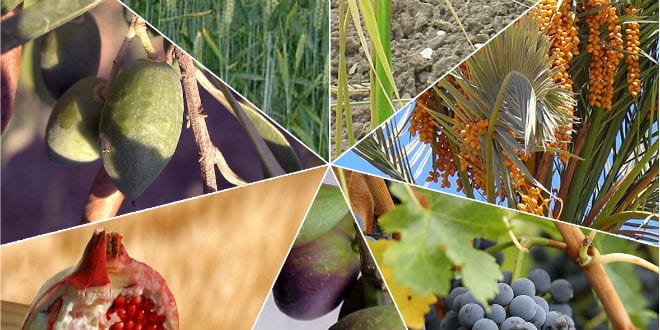Sunday evening is the holiday of Tu B’Shevat, the fifteenth day of the month of Shevat, signaling the new year of the trees. It brings a hopeful taste of spring to the long, dark days of winter, marking the time when the first trees in Israel begin to emerge from their winter dormancy and hints of green can be seen in the fields.
Though hikes into the forest to plant trees gives the day a feeling of vacation, it is actually a Biblical holiday connected with the land of Israel and an essential part of the Temple service. In the days of the Temple, it was important to ascertain precisely which year the fruit on the trees came from. Fruit that blossomed before the fifteenth of Shevat was categorized as coming from the previous year, and fruit that blossomed after that date belonged to the next year.
We are presently in the first year of the cycle, and, practically speaking, fruit that has already bloomed but is still on the tree is considered as coming from last year, a shmittah (sabbatical) year, in which it was forbidden to plant or work the land. This gives the fruit an elevated status, requiring that it be treated with respect and according to specific laws.
Tu B’Shevat is traditionally preceded by the planting of trees, doubly important this year since last year was a shmittah year, in which no trees were planted. Tu B’Shevat is also celebrated by eating from the fruits of the land, focusing on the seven species which are especially blessed in Israel (Deuteronomy 8:8): wheat, barley, grapes, figs, pomegranates, olives, and honey (which the sages understand here to mean dates).
Approximately 500 years ago, the Kabbalists of Safed compiled a Tu B’Shevat seder (literally “order”, but here meaning a ritual meal) that mirrors the ceremony performed on the first nights of Passover. It is a unique and beautiful custom which is becoming more popular as social awareness of ecological issues rises.
Since the Tu B’Shevat seder is not strictly outlined in rabbinic literature, there is leeway for creativity and personalizing the experience. One outreach organization has taken the seder a step further by designing a do-it-yourself guide.
Livnot U’Lehibanot (“To build and be built”), a non-profit organization based in Safed, has been bringing volunteers to physically contribute to the land of Israel for over 35 years. Some of the volunteers excavate and rebuild the ruins of the Old City of Safed, while others may renovate bomb shelters and deliver emergency provisions in times of need.
As part of their programming, they have been hosting Tu B’Shevat seders for over 20 years. This year, they are calling for a global Tu B’Shevat celebration. Program Director Meir Paltiel described their vision of the holiday as “an international gathering.” He explained how this particular Jewish holiday epitomized that vision.
“The concepts, teachings and spirituality of this holiday have the power to not only bring together Jews of all denominations and the unaffiliated but our brothers and sisters from other religions as well. Everyone can find their place at this table,” Paltiel said.
He added that the seder also brings one closer to the holy land. “The seder provides a path to connect physically and spiritually to the Land of Israel and the wisdom our Sages gathered from the natural world around them,” he explained.
Livnot has compiled a Tu B’Shevat companion, available as a free PDF download. It provides detailed practical instructions on how to run a seder, insights into the deeper meanings of the holiday, songs, and a list of the blessings to be said over the fruit.
He explained that the holiday should be universal since it is incredibly relevant for the spiritual reality we find ourselves in today. Livnot’s Tu B’Shevat companion not only describes the religious aspects of the holiday, but also connects it to modern concerns and ecology.
Dates, for example, are a crop that thrives when grown organically, and every part of the tree is utilized. In the Livnot companion, they are held up as a “symbol of sustainability and a waste-free lifestyle. Every part of the tree is useful and has a purpose. Just as in our private lives we are encouraged not to waste our resources.”
Another current social issue, plurality, is also brought to light through the coming together of God’s diverse bounty in the Tu B’Shevat seder.
The Livnot companion explains: “Different people have different abilities and traits, and building a community often requires a certain diversity in which every member contributes his or her special color to the communal bouquet.”




